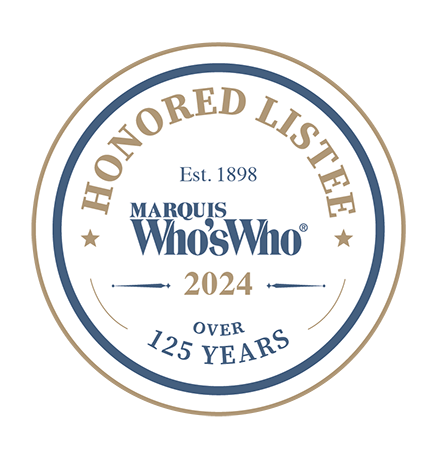Blog
Mastering Website Copy: Drive Results with Expert Tips

Writing Website Copy that Drives Results


How important is website copy for digital marketing success?
Website copy is crucial for digital marketing success as it is the voice of your brand, conveying your message, engaging customers, and driving conversions. Well-crafted copy that is SEO optimized can significantly impact website traffic, user engagement, and ultimately, lead generation.
Key Highlights
- Understanding your audience's needs and pain points is crucial for crafting effective website copy
- Clarity and conciseness are key in engaging website visitors
- The blueprint for crafting compelling website copy involves identifying pain points and using bullet points effectively
- Crafting captivating headlines and subheadings is essential for grabbing the attention of website visitors
- SEO optimization plays a significant role in making website search engine friendly
- The impact of storytelling in website copy can help create a strong brand voice
- Consistency in brand messaging across formats is important for creating a cohesive user experience
Writing website copy that drives results is essential for businesses looking to attract and convert website visitors. Website copy plays a crucial role in engaging visitors, conveying the brand message, and persuading them to take action. However, writing effective web copy can be a challenging task. It requires a deep understanding of the target audience, clarity in communication, and the ability to create a compelling narrative. In this blog, we will explore the key elements and strategies involved in writing website copy that drives results. Whether you're a copywriter or a business owner looking to improve your website copy, these tips will help you create engaging and persuasive content that resonates with your audience and drives conversions. So if you want to learn how to write website copy that doesn't suck, you've come to the right place.


The Essence of High-Converting Website Copy
Website copy is the backbone of any successful online presence. It is the text that appears on your homepage, landing pages, and product descriptions, and it plays a crucial role in engaging and converting website visitors.
High-converting website copy is not just about using persuasive language, but also about understanding the needs and pain points of your target audience and aligning your message with your brand voice. By crafting compelling and persuasive website copy, you can create a strong connection with your audience and drive them to take action through the sales funnel. Additionally, a blog is a great place to expound upon things that are important to your persona, allowing you to further engage and connect with your audience. Be sure to dedicate time to developing and writing long-form blog posts that support your web copy and link back to relevant pages elsewhere on your site.
Defining What Makes Website Copy Effective
Effective website copy is not just about using fancy words or persuasive language. It goes beyond that. It is about creating a seamless user experience, understanding your target audience, and delivering the right message at the right time. Effective website copy should be clear, concise, and engaging. It should provide value to the reader, address their pain points, and offer solutions.
Website copy should also align with your brand voice and reflect your company's values and personality. By creating effective written content, including copy and visuals, you can find the right balance and drive results for your website. Don't forget to subscribe to our newsletter by entering your email in the form above to receive helpful tips and resources for writing website copy that drives results.
The Role of Clarity and Conciseness in Engaging Visitors
Clarity and conciseness are crucial elements of engaging website copy. When visitors land on your website, they are looking for specific information and they want it quickly. If your copy is unclear or too wordy, you risk losing their attention and driving them away. To engage visitors, your website copy should be clear, concise, and to the point, especially for those accessing your site from mobile devices. Use language that is easy to understand and avoid jargon or technical terms that may confuse your audience. Break up your copy into short paragraphs, use bullet points to highlight key information, and make sure your message is easily digestible. By prioritizing clarity and conciseness in your website copy, you can keep visitors engaged and increase the likelihood of conversions. Don't forget to optimize your web pages for maximum impact!


The Blueprint for Crafting Compelling Website Copy
Crafting compelling website copy requires a strategic approach. It involves understanding your audience's needs and pain points, aligning your message with your brand voice, and using persuasive techniques to drive action. A blueprint for crafting compelling website copy involves identifying your audience's needs and pain points, highlighting the benefits of your product or service, and presenting information in a clear and concise manner. Additionally, using bullet points to break up information and make it more digestible can enhance the readability and engagement of your website copy. By following this blueprint, you can create website copy that resonates with your audience and drives results.
Understanding Your Audience's Needs and Pain Points
Understanding your audience's needs and pain points is essential for crafting effective website copy that utilizes inbound marketing strategies. By identifying what challenges or problems your audience is facing, you can tailor your copy to address those pain points and offer solutions.
Conducting market research, surveys, or customer interviews can provide valuable insights into your audience's needs and preferences. By incorporating these insights into your website copy, you can create a connection with your audience and position your product or service as the solution they are looking for. By understanding your audience's needs and pain points, you can figure out the why behind their actions and use that knowledge to guide your writing process. This will ultimately result in website copy that resonates with your audience and drives conversions through effective inbound marketing techniques.
Aligning Your Message with Your Brand Voice
Aligning your message with your brand voice is crucial for creating compelling website copy. Your brand voice represents the personality and values of your company, and it should be reflected in your website copy and social media content. To ensure consistency, it can be helpful to create a style guide for your brand's content creators to follow. This guide can outline guidelines for tone, language, and style, based on your brand values. By aligning your message with your brand voice using a style guide, you can effectively communicate your brand's unique personality and establish a strong connection with your audience.


Key Components of Website Copy That Converts
Website copy that converts is not just about using persuasive language, but also about incorporating key components that engage visitors and drive them to take action. Some key components of website copy that converts include crafting captivating headlines and subheadings, writing persuasive product and service descriptions, and optimizing your copy for search engines. By incorporating these key components into your website copy, you can create a compelling user experience that encourages visitors to become customers.
Crafting Captivating Headlines and Subheadings
Captivating headlines and subheadings play a crucial role in grabbing the attention of website visitors and enticing them to read further. When crafting headlines and subheadings, it is important to keep them concise, compelling, and relevant to the content that follows. Here are some tips for crafting captivating headlines and subheadings using AI technology:
- Use action-oriented language to create a sense of urgency and encourage visitors to take action.
- Incorporate keywords that are relevant to your target audience and help improve your search engine rankings.
- Make use of numbers or statistics to add credibility and make your content more appealing.
- Use power words or emotional triggers to evoke curiosity or stir emotions in your readers.
By following these tips, you can create headlines and subheadings that capture the attention of your readers and entice them to explore your website further.
Writing Persuasive Product and Service Descriptions
Writing persuasive product and service descriptions is essential for showcasing the value and benefits of your offerings to potential customers. When writing these descriptions, it is important to highlight the unique features and advantages of your products or services, and how they solve the pain points of your target audience. Use persuasive language, storytelling techniques, and social proof to build credibility and create a sense of urgency.
Additionally, make sure to include clear calls to action that encourage visitors to take the next step, such as making a purchase or signing up for a free trial. By writing persuasive product and service descriptions, you can effectively communicate the value of your offerings and drive conversions.


SEO Optimization: Making Your Website Copy Search Engine Friendly
Optimizing your website copy for search engines is crucial for increasing your online visibility and attracting organic traffic. SEO optimization involves incorporating relevant keywords into your copy, creating unique and valuable content, and optimizing your meta descriptions and title tags. By following SEO best practices, you can improve your website's rankings on search engine results pages and drive more targeted traffic to your site. Incorporating strategic keywords naturally into your text and optimizing your meta descriptions and title tags are some key strategies for SEO optimization.
Incorporating Keywords Naturally into Your Text
Incorporating keywords naturally into your website copy is important for improving your search engine rankings and attracting organic traffic. However, it is essential to use keywords in a natural and organic way that enhances the readability and flow of your content. Here are some tips for incorporating keywords naturally into your text:
- Conduct keyword research to identify relevant keywords that are popular among your target audience.
- Place keywords strategically in your headings, subheadings, and throughout your content.
- Use variations of keywords to create a more diverse and natural language.
- Avoid keyword stuffing, which is the excessive use of keywords in an unnatural way.
By incorporating keywords naturally into your text, you can improve your search engine rankings and make your website more discoverable to your target audience.
The Importance of Meta Descriptions and Title Tags
Meta descriptions and title tags play a crucial role in improving your website's visibility on search engine results pages. Meta descriptions provide a brief summary of your page's content and should be compelling, concise, and relevant to the search query. Title tags, on the other hand, are the clickable headlines that appear in search results and should accurately describe the content of your page. Optimizing your meta descriptions and title tags with relevant keywords and persuasive language can increase click-through rates and improve your website's ranking on search engines.
By paying attention to meta descriptions and title tags, you can enhance your website's visibility and attract more organic traffic. Additionally, having a clear and concise meta title and description can also improve the user experience by helping them easily identify and navigate to your website from their browser tabs or social media shares.


The Impact of Storytelling in Website Copy
Storytelling is a powerful tool in creating a strong brand voice and engaging website visitors. By using storytelling techniques in your website copy, you can evoke emotions, create a connection with your audience, and communicate your brand's values and personality. Storytelling helps humanize your brand and makes it more relatable to your audience. Incorporating storytelling elements in your website copy can help you stand out from the competition and leave a lasting impression on your visitors. By leveraging the power of storytelling, you can create a memorable user experience and drive conversions.
How to Use Stories to Connect with Your Audience
One of the most effective ways to connect with your audience and make your website copy more engaging is by using storytelling. Stories have been used for centuries to captivate and inspire people, and they can be a powerful tool in your copywriting arsenal.
To use storytelling in your website copy, start by understanding your target audience and their needs. What are their pain points and challenges? What are their goals and aspirations? Once you have a clear understanding of your audience, you can craft stories that resonate with them.
When telling a story, make sure it has a clear structure with a beginning, middle, and end. Start by setting the scene and introducing the main characters or problem. Then, describe the conflict or challenge they face. Finally, show how your product or service can help solve that problem and create a positive outcome.
By using storytelling in your website copy, you can create a connection with your audience on an emotional level. People are more likely to remember and resonate with stories than with plain facts and statistics. So, take the time to craft compelling stories that will engage your audience and drive results.
Examples of Storytelling in Effective Website Copy
Effective website copy often incorporates storytelling to engage and connect with the audience. Here are a few examples of how storytelling can be used in website copy:
- About Us Page: Instead of simply listing facts and figures about your company, tell the story of how it was founded. Share the challenges and triumphs along the way, and highlight the values and mission that drive your business.
- Product Pages: Use storytelling to describe how your product or service has solved a problem for a customer. Share their journey and the positive impact your offering has had on their life or business.
- Testimonials: Instead of just featuring short quotes from satisfied customers, include their full story. Let them share how your product or service has made a difference in their life or business.
By incorporating storytelling into your website copy, you can make it more relatable and engaging for your audience. Remember to focus on the emotions and experiences of your customers to create a connection that drives results.


Calls to Action That Prompt Immediate Response
Calls to action (CTAs) are a crucial element of effective website copy. They are the prompts that encourage your visitors to take the desired action, such as signing up for a newsletter, requesting more information, or making a purchase.
To create CTAs that prompt immediate response, make sure they are clear, compelling, and easy to find. Use action-oriented words that convey a sense of urgency and value. For example, instead of a generic "Sign Up," use "Get Your Free Trial Now" to entice visitors to take action.
It's also important to provide a clear and easy path for visitors to follow when they click on a CTA. Make sure the next steps are clearly outlined and easy to complete. By creating CTAs that prompt immediate response, you can increase your conversion rates and drive results for your business.
Best Practices for Designing Effective CTAs
Designing effective calls to action (CTAs) is essential for driving conversions on your website. Here are some best practices to keep in mind:
- Clear and concise: Make sure your CTAs are easy to understand and concise. Use action verbs and simple language to convey the desired action.
- Placement: Position your CTAs where they are easily visible and can be easily clicked. Consider placing them above the fold or at the end of relevant content.
- Contrasting colors: Use colors that stand out from the rest of the page to make your CTAs visually distinct and attention-grabbing.
- Size and shape: Make your CTAs large enough to be easily clickable and use a shape that stands out, such as buttons or arrows.
- Test and optimize: Continuously test different variations of your CTAs to see which ones perform best. Analyze the results and make adjustments to improve conversion rates.
By following these best practices, you can design CTAs that are more likely to capture your audience's attention and prompt them to take action.
Examples of CTAs That Convert
Effective calls to action (CTAs) can significantly impact your website's conversion rates. Here are some examples of CTAs that convert:
- "Start Your Free Trial Today": This CTA encourages visitors to try your product or service for free, removing any barriers to entry.
- "Get 50% off your first purchase": This CTA offers a discount and creates a sense of urgency, enticing visitors to make a purchase.
- "Subscribe to our newsletter for exclusive offers and updates": This CTA offers value in the form of exclusive content and keeps visitors engaged with your brand.
- "Join our community of over 10,000 satisfied customers": This CTA leverages social proof to demonstrate the popularity and trustworthiness of your brand.
Remember, the key to effective CTAs is to make them clear, compelling, and easy to follow. Use action-oriented language and offer value to your visitors to encourage them to take the desired action.


Leveraging Social Proof to Build Trust
Building trust with your audience is crucial for the success of your website. One effective way to do this is by leveraging social proof. Social proof refers to the influence that other people's behavior has on our own behavior.
When people see that others have had a positive experience with your product or service, they are more likely to trust and engage with your brand. This is especially important for marketers, as social proof can help establish credibility and attract potential customers.
Testimonials and reviews are powerful forms of social proof. They provide evidence that your product or service delivers on its promises and can be trusted. Including testimonials on your website can help build credibility and encourage visitors to take the desired action.
Another form of social proof is case studies. These provide detailed accounts of how your product or service has helped a specific customer or solved a particular problem. Case studies demonstrate the value and effectiveness of your offering and can be a persuasive tool for potential customers.
By leveraging social proof through testimonials, reviews, and case studies, you can build trust with your audience and drive results for your business.
The Power of Testimonials and Reviews
Testimonials and reviews are powerful tools for building trust and credibility with your audience. They provide evidence that your product or service delivers on its promises and can be trusted. Here's why testimonials and reviews are so powerful:
- Social proof: Testimonials and reviews provide social proof by showcasing real experiences and opinions from satisfied customers. When potential customers see that others have had a positive experience with your brand, they are more likely to trust and engage with your business.
- Credibility: Testimonials and reviews add credibility to your brand. They demonstrate that your product or service has been tried and tested by real people and has delivered positive results.
- Persuasiveness: Testimonials and reviews can be persuasive by highlighting specific benefits or features of your product or service. They provide concrete examples of how your offering has helped others and can address potential objections or concerns.
When using testimonials and reviews, it's important to include details about the customer, such as their name, company, and photo, if possible. This adds authenticity and makes the testimonial or review more relatable to your audience.
Case Studies as a Tool for Demonstrating Value
Case studies are an effective tool for demonstrating the value of your product or service. They provide in-depth accounts of how your offering has helped a specific customer or solved a particular problem. Here's why case studies are valuable:
- Concrete examples: Case studies provide concrete examples of how your product or service has helped others. They demonstrate the real-world application and effectiveness of your offering, making it easier for potential customers to envision the benefits they could experience.
- Social proof: Like testimonials and reviews, case studies provide social proof by showcasing real experiences and outcomes. They demonstrate that your product or service has delivered tangible results for others, which can help build trust and credibility with your audience.
- Problem-solving ability: Case studies show how your product or service can solve specific problems or address particular pain points. They provide detailed insights into the challenges your customers faced and how your offering provided a solution.
When creating case studies, be sure to include the customer's background, the problem they were facing, the solution you provided, and the results they achieved. This level of detail will make your case studies more compelling and informative for your audience.
The Role of Visuals in Enhancing Website Copy
Visuals play a crucial role in enhancing your website copy and improving the overall user experience. Here's why visuals are important:
- Attention-grabbing: Visuals, such as images or videos, are attention-grabbing and can help capture and retain your audience's attention. They can also convey information more quickly and effectively than text alone.
- Visual storytelling: Visuals can help tell a story and evoke emotions in your audience. They can convey your brand's personality and values, and create a stronger connection with your audience.
- Improved comprehension: Visuals can enhance the understanding and comprehension of your website content. They can help break up large blocks of text and make complex information more digestible.
When choosing visuals for your website, consider your brand voice and the message you want to convey. Use high-quality, relevant images that complement your copy and enhance the user experience.
Choosing Images That Complement Your Message
When selecting images for your website, it's important to choose visuals that complement your message and align with your brand voice. Here are a few tips for choosing the right images:
- Relevance: Choose images that are relevant to your content and help convey your message. Avoid using generic stock photos that don't add value or connection to your copy.
- Consistency: Maintain consistency in your visual style throughout your website. Use similar colors, fonts, and image styles to create a cohesive and professional look.
- Brand personality: Consider the personality and values of your brand when selecting images. If your brand is fun and playful, choose images that reflect that. If your brand is more serious and professional, choose images that convey that tone.
- Authenticity: Use authentic images that resonate with your audience and feel genuine. Avoid using overly staged or artificial-looking images.
By choosing images that complement your message and align with your brand voice, you can enhance the impact of your website copy and create a cohesive and engaging user experience.
The Balance Between Text and Visuals
Finding the right balance between text and visuals is essential for creating an effective website copy. Here are a few considerations to keep in mind:
- Readability: Ensure that your text is easily readable by using appropriate fonts, sizes, and colors. Avoid using backgrounds or fonts that make the text difficult to read.
- Complementary visuals: Use visuals that complement and enhance your text. They should provide additional context or convey emotions that support your message.
- White space: Leave enough white space around your text and visuals to create a clean and organized layout. This helps improve readability and prevents the content from appearing cluttered.
- Hierarchy: Use visual cues, such as larger fonts or bold text, to highlight important information or key points. This helps guide the reader's eye and directs their attention to the most important elements.
By striking the right balance between text and visuals, you can create a visually appealing and engaging website copy that effectively communicates your message and enhances the user experience.


A/B Testing: Finding What Works Best for Your Audience
A/B testing is an essential tool for finding what works best for your audience and improving your website copy. By testing different variations of your copy, you can gather data and insights to make informed decisions. Here's how to conduct A/B testing on your website copy:
- Identify variables: Start by identifying the variables you want to test, such as headlines, calls to action, or overall messaging.
- Create variations: Develop different versions of your copy, making specific changes to each variation.
- Split your audience: Randomly divide your audience into groups and present each group with a different version of your copy.
- Analyze results: Measure and analyze the performance of each variation, looking at metrics such as click-through rates, conversion rates, and engagement.
- Implement changes: Based on the results of your A/B test, implement the changes that drive the best results.
By regularly conducting A/B tests on your website copy, you can continuously improve and optimize your content to better resonate with your target audience and drive results.
How to Conduct A/B Testing on Your Website Copy
Conducting A/B testing on your website copy is an effective way to improve your messaging and optimize your content for better results. Here's how to conduct A/B testing:
- Define your goals: Identify the specific goals you want to achieve with your website copy, such as increasing click-through rates or improving conversion rates.
- Choose the variables to test: Determine which elements of your copy you want to test, such as headlines, calls to action, or body copy.
- Create variations: Develop different versions of your copy, making specific changes to each variation. For example, you could test different headlines or different wording for your calls to action.
- Split your audience: Randomly divide your audience into groups and present each group with a different variation of your copy. Use a tool or platform that allows you to track and measure the performance of each variation.
- Analyze the results: Measure and analyze the performance of each variation, looking at metrics such as click-through rates, conversion rates, and engagement. Identify which variation performs better and meets your goals.
- Implement changes: Based on the results of your A/B test, implement the changes that drive the best results. Continue to monitor and optimize your website copy based on ongoing testing and analysis.
By conducting A/B testing on your website copy, you can gain valuable insights into what resonates with your audience and make data-driven decisions to improve your messaging and drive better results.
Analyzing and Interpreting Test Results
Analyzing and interpreting test results is an essential step in A/B testing. It allows you to understand the performance of different variations of your website copy and make informed decisions to improve your messaging. Here's how to analyze and interpret test results:
- Gather data: Collect data on key metrics such as click-through rates, conversion rates, and engagement for each variation of your website copy.
- Calculate significance: Use statistical analysis to determine if the differences in performance between variations are statistically significant. This helps you identify meaningful differences and avoid drawing conclusions based on random fluctuations.
- Compare results: Compare the performance of each variation using a text table to visualize the data. Include metrics such as visits, conversions, and conversion rates for each variation.
| Variations | Visits | Conversions | Conversion Rate |
|---|---|---|---|
| Variation A | 1000 | 50 | 5% |
| Variation B | 1000 | 60 | 6% |
- Draw conclusions: Based on the data and statistical analysis, draw conclusions about which variation performs better and meets your goals. Use the insights gained to inform future iterations and improvements to your website copy.
By analyzing and interpreting test results, you can make data-driven decisions to optimize your website copy and improve your messaging to better resonate with your audience and drive results.
Crafting high-converting website copy is a strategic blend of engaging storytelling, SEO optimization, and compelling calls to action. By understanding your audience's needs, aligning your message with your brand voice, and leveraging social proof, you can build trust and prompt immediate responses. Incorporating keywords naturally and optimizing meta descriptions enhance search engine friendliness. Remember, the impact of visuals, captivating headlines, and persuasive product descriptions cannot be underestimated. Regularly updating your website copy, analyzing A/B test results, and measuring success metrics are vital for continual improvement. Embrace the power of effective website copy to drive meaningful results and enhance your online presence.
Frequently Asked Questions
How often should website copy be updated?
Website copy should be regularly updated to reflect the latest information about products, services, and industry trends. Fresh content not only keeps the website relevant for return visitors but also signals to search engines that the website is active, potentially boosting SEO rankings. Regular updates also provide an opportunity to refine messaging and make improvements based on user feedback and analytics.
Can good website copy improve SEO rankings?
Yes, good website copy can improve SEO rankings. Optimized copy with strategic keyword integration helps search engines understand the relevance of the website to specific search queries. By providing valuable and informative content, website copy increases the chances of attracting organic traffic and earning backlinks from other reputable websites. This, in turn, contributes to higher search engine rankings and increased visibility for the website.
What's the difference between website copy and content?
Website copy refers to the words used on specific pages of a website, such as the homepage, about page, and product pages. It includes headlines, subheaders, body copy, and CTAs, and is focused on engaging and converting website visitors. On the other hand, content refers to a broader range of materials, including blog posts, articles, videos, and social media posts, which are created to provide information, entertainment, or value to the audience. Both website copy and content contribute to the overall user experience and should be aligned with the brand's voice and goals.
How do I measure the success of my website copy?
The success of website copy can be measured through various metrics, including analytics data, user feedback, and conversion rates. Analytics can provide insights into website traffic, user behavior, and engagement, helping to identify areas for improvement. User feedback, through surveys or user testing, can provide valuable insights into how the copy resonates with the target audience. Conversion rates, such as click-through rates, form submissions, and sales, indicate the effectiveness of the copy in driving desired actions. A combination of these metrics can help evaluate and optimize the performance of website copy.
Recent Articles
Join my "Smart Women Know SEO" Newsletter.
Join Now
We will get back to you as soon as possible.
Please try again later.



